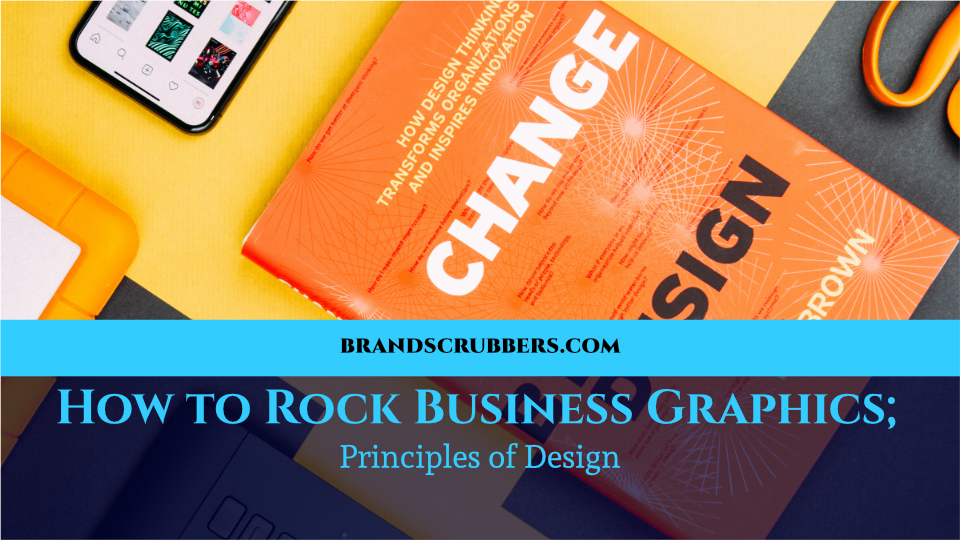Before we start talking about the principles of design, you need to understand that starting your own business can be one of the most fulfilling things you’ll ever do. However, with it, comes risk. You’re risking your time, money and sometimes your sanity in the hopes of a better future. And because of this, small business owners try to save money where they can, and most times, this comes in around the same time that they realize they need a logo and some business cards.
Now, don’t get me wrong, as a designer, I highly recommend getting a professional to help. There’s a reason we went to school, and yes, our 5 years of experience does make a difference in the quality of designs we’re producing.
However, I also understand that sometimes there just isn’t money in the bank to allow it. So, we take to the old DIY solution and hope for the best.
Do you wanna know a secret? You don’t have to be a creative mastermind to come up with a usable and functional design. I’m not saying that you’ll create a masterpiece, however, there are a few basic principles of design that can help you ‘fake it till you can pay someone else to make it’.
Principles of Design
There are many factors that go into the creative process, and it can be pretty overwhelming for many people when they’re just starting out. So, I’ve gone ahead and compiled 6 basic rules that can help take your designs to the next level.
These 6 points are the basis upon which every good design relies, and once you understand them, you can utilize them to ensure that even when you’re cutting corners, it doesn’t look like a 5-year-old got a hold of MS paint.
These are the 6 basic principles of design:
Balance
Any good design, big or small, must be balanced. That’s why the first of our principles of design is balance. It provides visual stability and structure to any design. There are two ways to achieve balance – symmetrical and asymmetrical. Symmetrical balance is pretty straightforward, everything is lined up along the same axis (vertical or horizontal) and allows equal space all around. Asymmetrical designs can be a bit trickier, as the balance is visually based.
Proximity
Making sure that similar content is organized properly helps your viewer to easily identify where they need to go, and also helps your design to stay cohesive and aesthetically pleasing. In the case of proximity, it’s not just about placing related content together, it’s about connecting it visually. This creates a sense of organization and provides a focal point. You can use fonts, colours, sizes etc. to visually link content.
Alignment
Alignment is arguably one of the most important principles of design. It ensures that the content is cohesive and organized which automatically makes your design more aesthetically pleasing. In terms of large-scale designs (such as page layout or a website) you can rely on the use of a grid to help you align content.
Repetition
Creating brand continuity is integral when you’re building up your brand. You wouldn’t want a potential client to get confused because your web pages all use different colours or fonts, because it creates a lack of trust in your brand. Making sure that all of your marketing material, website and branding are consistent, creates an association with your brand and helps consumers to remember you. It takes a viewer 7 times of seeing the same information before they remember it, and if each one they’re seeing from you uses a different style, or changes up the font, it’s gonna be pretty difficult for them to build up that association.
Contrast
Contrast is one of the easiest ways we can direct the attention of our clients. Using tools such as fonts, colour, size etc. we can subtly manoeuvre the viewer’s eyes through the page in the exact way we want. Ensuring there is contrast also helps make our designs accessible and user-friendly, which is rapidly becoming the key focus of most design.
Space
When it comes to space, sometimes more is more. As we move further into the information age, we’re finding ourselves overwhelmed with too many things reaching for our attention, and this is why utilizing space can help to bring focus to our main points. Allowing certain elements of your design to breathe through the use of white space can help make your design shine. When implemented effectively, it can also ensure that the viewer isn’t overwhelmed by too many competing graphics.
Keeping these principles in mind can make a huge difference in the quality of your designs, and get you through until you’re able to invest more money in your brand.
And, if all else fails, just remember to keep it simple, and stay inspired.
Stephanie Butler


Recent Comments